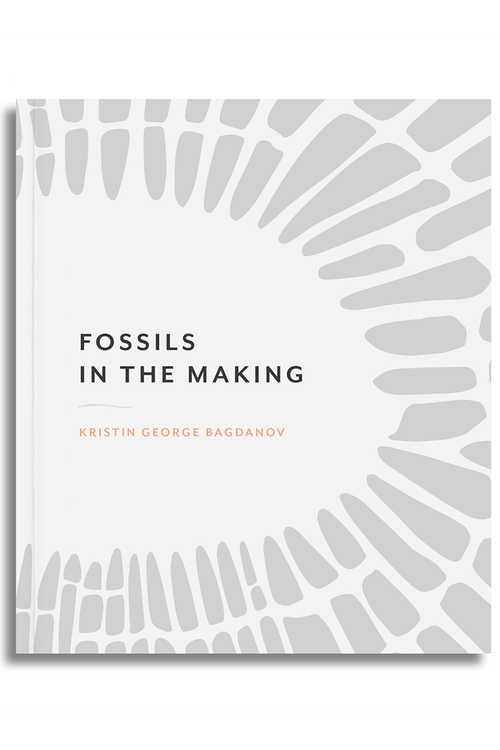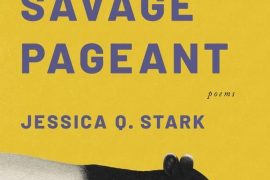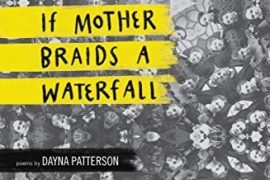The Micro-Essay Series on First Books was conceived as a way to give readers and writers a look behind the curtain, to see how authors approached ideas, styles, and subjects in their first literary work. Writing and publishing a first book can be a long and arduous journey, one that tests a writer’s motivation, patience, and emotional stamina. We hope that this series shows the value behind that process, and that in addition to spurring discussions amongst readers regarding these first works, it will motivate writers—whether they’re on their first or twentieth book—to continue putting pen to paper.
For our inaugural essay, Kristin George Bagdanov delves into the creation of her debut collection Fossils in the Making (Black Ocean, 2019). George Bagdanov’s poems are, to borrow the words of Alice Fulton, “delicately searing,” and her book, apart from being intelligent and eloquent, is lyrically inventive, prompting readers to see a poem on the page through multiple lenses, and never to settle for any one image. The poem “Earth” is a great example of this, with its ending left open for a variety of interpretations: world This is the that ends in inches self that regards the and cringes body The love and labor behind these poems is obvious, and there is no doubt that poetry and non-poetry readers and writers alike will gain valuable insight into her creative process, and see that they are not alone in their approach to bringing parts of themselves into the world. George Bagdanov allows us a chance to peel back the layers of this beautiful collection, and like a mysterious cache that’s been unearthed, to see and “hear what else there is” inside.Fossils In The Making by Kristin George Bagdanov
Before it became Fossils in the Making, my book was “Being a Body.” I began writing it in the M.F.A program at Colorado State University, where I was reading and half-understanding a lot of Heidegger, thinking about Dasein and dwelling and trying to trace the connections between my body, my self, my soul, and the world. While the word “body” or “bodies” now appears 103 times in Fossils (thanks, wordclouds.com), it was in Every. Single. Title. in that first manuscript. I still admire the obsessiveness of that first iteration: its commitment to grounding language in matter. But I’m also glad I found a more nuanced way of writing that obsession.
The second major version of the book was called “The Somatic Wager,” a riff on Pascal’s. In trying to measure what a body was and how it worked, I became interested in the instruments and discourse that attempt to translate subjective experience into objective fact. While Pascal’s wager was more concerned with the soul, I was more interested in the body and its limits. I wanted to chart the premises and equations that undergird the wagering of the future against the present, the present against the future, as resources and bodies are consumed and exploited for the sake of both. This concern produced a “proof poem” that was essentially 20-something premises that, you guessed it, didn’t really prove anything (cuz, poetry). While much of that actual wager disappeared from the book, its conditions still frame the stakes of the project as a whole. Cutting your favorite poems from a manuscript, I realized, doesn’t mean they disappear; rather they continue to haunt it, shaping its desires through their absent presence. Most of these big-picture changes were taking place well after I had defended my thesis and started sending out my manuscript to the usual first-book contests. Thank GOD no one wanted it then. I received enough nibbles to keep me from getting discouraged, but I feel like the real growth of the book occurred in those three years after my program when I sat on my floor arranging, rearranging, cutting, and writing. This is when I learned that the process of writing a book is completely different from writing a poem. We learn in writing programs how to write poems that sing. Poems that get published or win contests, even. But learning how to write a collection that produces a cohesive but not conclusive experience for the reader is a whole other matter. One that takes a good deal of time and tenderness with one’s own work to develop a sense of what the manuscript needs. For me, this meant making space for the quiet poems. No one’s asked me for advice, including this essay prompt, but if I were to offer any, it would be to pay more attention to these quiet poems. These poems usually don’t get published. They don’t like being alone. Like our own selves, they are formed through their relationship with others, emerging from the ecology of the book rather than being inserted, fully formed, into it. I think this is where the real joy of a collection comes from—the surprising turns and pitches and swerves that propel the reader through it. Journals and magazines tend to favor poems that resemble hit singles, especially in this like-and-share-driven literary market, but you need quiet poems to bring those poems down to earth and draw them into conversation with one another. Nurturing these interstices is, I think, what turns a collection of poems into a poetry collection. [/vc_column_text][/vc_column][/vc_row]




